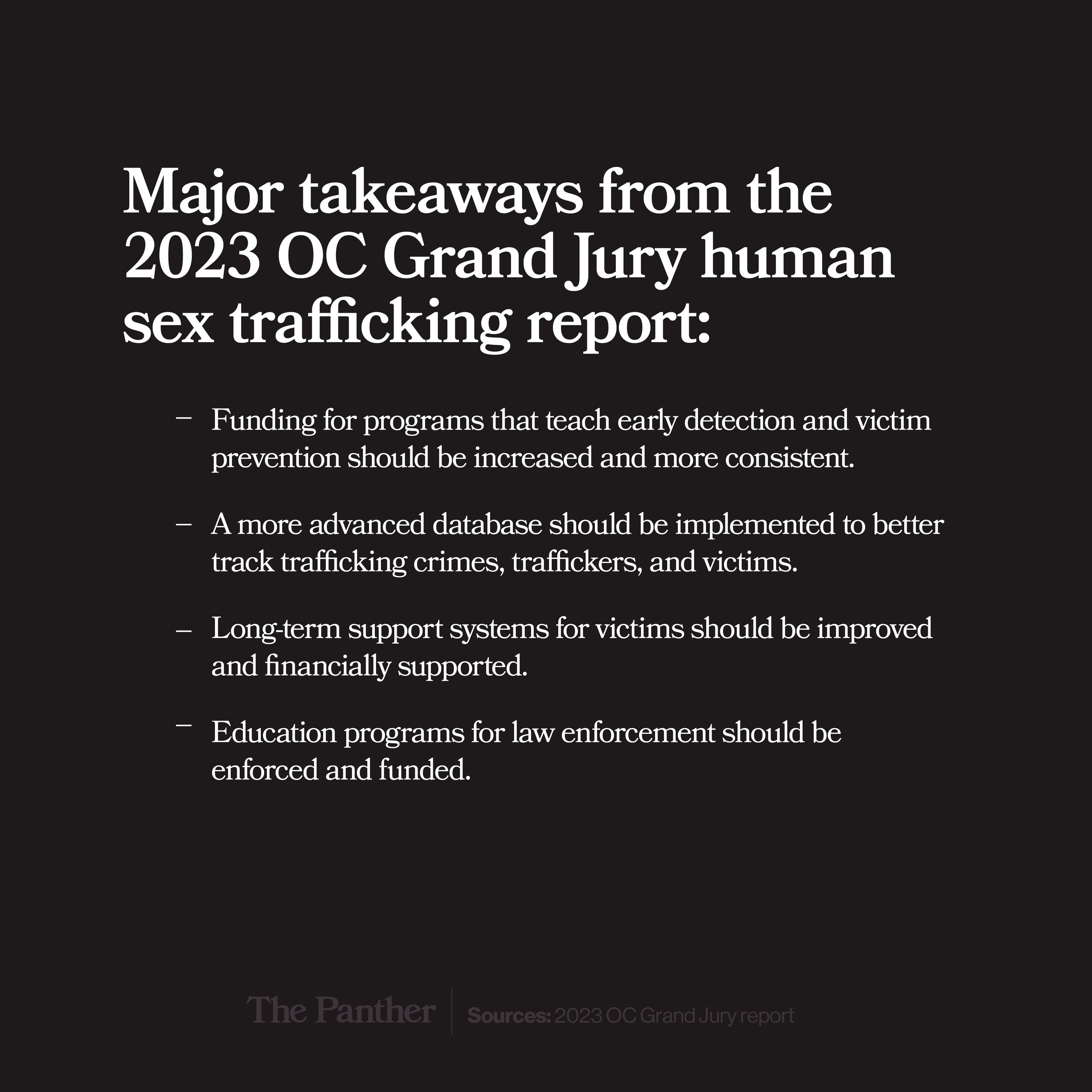OC Grand Jury suggests plans to combat human sex trafficking in recent report
The Orange County Grand Jury released their human sex trafficking report in June 2023, urging for more funding and advanced databases to better keep track of traffickers, victims and clients. Graphic by SUKHMAN SAHOTA, Art Director
The Orange County Grand Jury released a new report this summer on human sex trafficking, sharing the weaknesses and successes in the county’s current systems as well as recommending ways to improve prevention efforts.
According to the report, OC has been deemed a hotspot for human trafficking due to its affluence, heavy tourism and large population. Although prevention efforts have been implemented since the last Grand Jury report in 2012, the report states that there is still much more that needs to be done to ensure the safety of Orange County residents.
Human traffickers work a circuit — moving from place to place quickly — which makes them difficult to track. Additionally, cryptocurrency has allowed for new levels of secrecy in criminal transactions, making financial evidence nearly impossible to find.
Currently, a system for tracking offenders and victims exists, but the Grand Jury suggests that it needs to be improved to better recognize trends and connections that are going unnoticed. Similar databases are in place for gang activity and car theft in Orange County, and the Grand Jury recommends that one be implemented for human trafficking as well.
However, the Grand Jury also reported that funding for such efforts is low and inconsistent, which results in many law enforcement agencies such as the Orange County Sheriff’s Department and some police departments having to pull out of working with anti-trafficking organizations. With the lack of financial resources, it is more difficult to create educational programs for students on the subject of human trafficking as well as effectively train law enforcement, the report stated.
This issue has become significantly more relevant since the time of the previous Grand Jury study in 2012, as traffickers have developed a further reach through social media, making their coercion techniques tougher to spot.
Dani Smith, a sexual assault crisis counselor and advocate at Chapman University, explained to The Panther that college students need to be educated about the many forms that trafficking can take.
Smith emphasized that trafficking does not always look like the stereotypical scene people often associate it with. It can appear as a friendly message on social media, an enticing offer or a use of leverage or manipulation against a victim.
“It does happen, where someone gets taken,” Smith said. “I think that manipulation and coercion is getting them into a situation where they feel like they can’t escape.”
Smith believes that the best way for students to stay safe is to be informed and take proactive steps to avoid getting stuck in dangerous situations.
“It’s always about taking preventative measures…” Smith said. “Be aware (and always) let your friends know where you are. If something doesn’t feel right or feels too good to be true, it probably is.”
Education is one of the most effective ways to stay safe, according to both the Grand Jury report and Smith.
As college students in the area, it is crucial to know what resources are available. Organizations such as the Orange County Human Trafficking Task Force, the Blue Campaign and Waymakers are all helpful tools in seeking more information on the topic of human trafficking.

